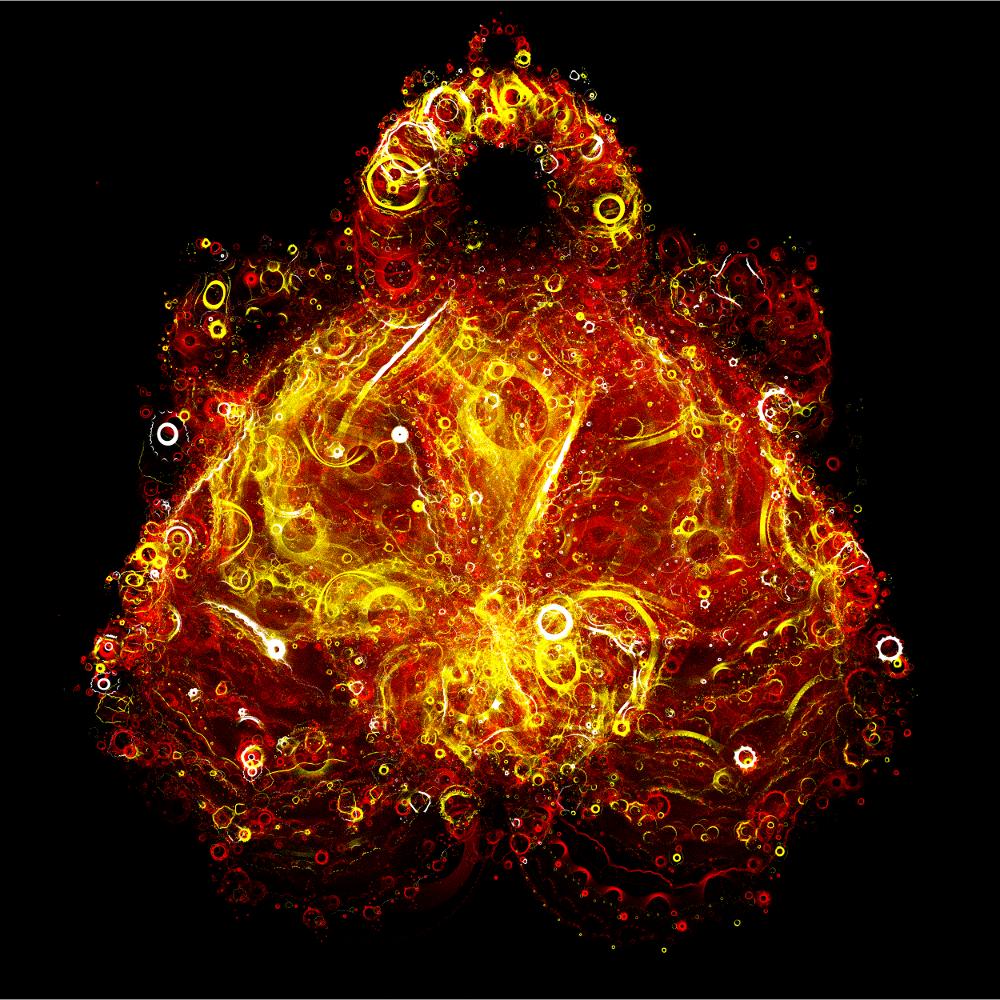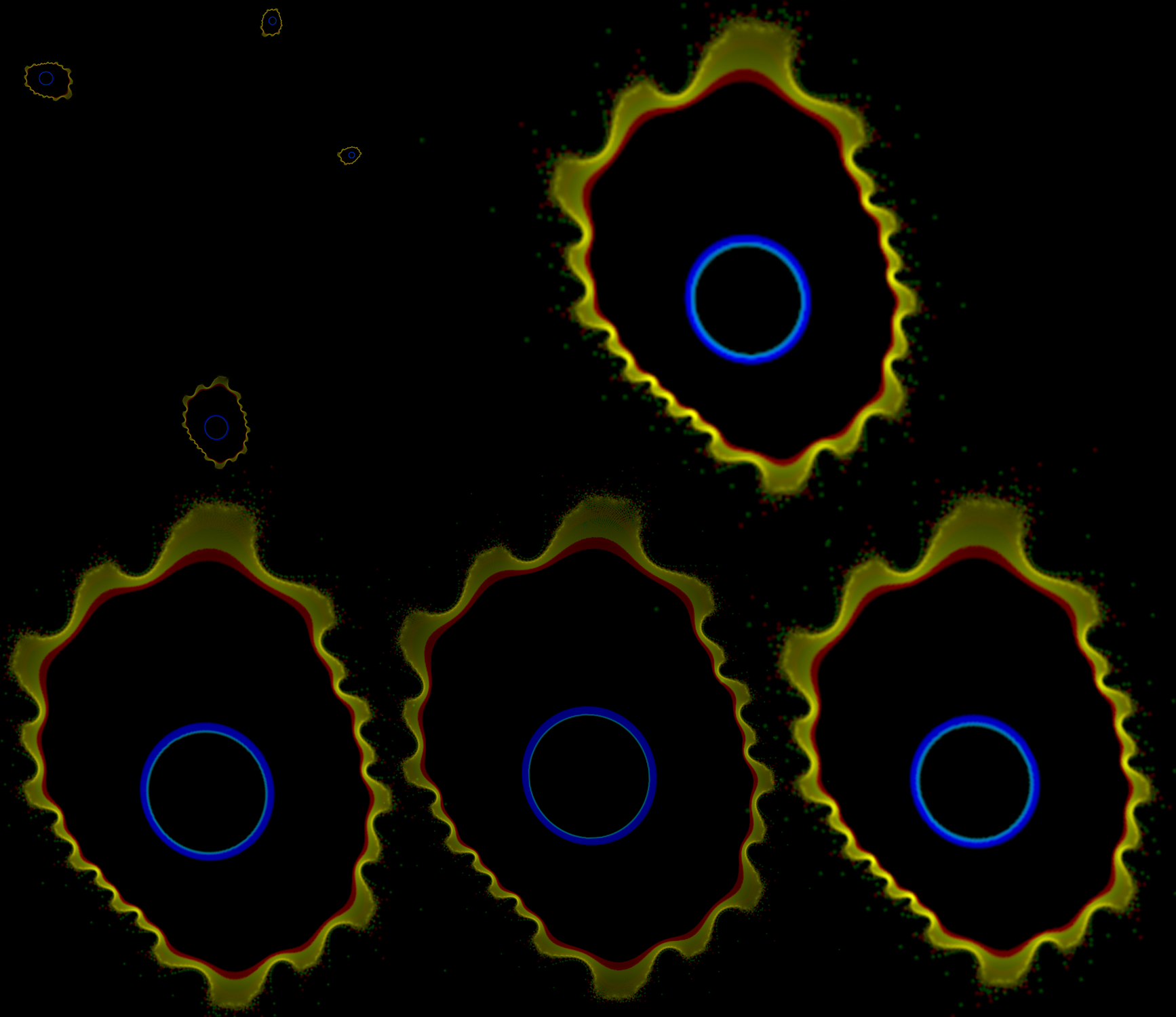Nice images kram1032 !
Sorry for not answering I just saw your posts...
what kinds of values are you using for these?
If I understood correctly, what you are doing is that you only look at a fairly narrow range of iteration counts, only even beginning to plot them at high values.
So what is the minimum value of iterations you consider in these images? I'm currently trying a classical BBrot image with:
- 1000 pre-iterations
- 10000 steps before the blue channel bails out
- 100000 steps before the green channel bails out
- 1000000 steps before the red channel bails out
And I further restrict the initial selected points such that both the initial point and the first iteration are inside the circle of radius 4 but neither in the main period-1-cardioid nor in the circle of period 2 to ensure that the selected points are at least reasonably close to the border of the set.
Is there anything else you are doing besides that? What are your choices for the various values?
I think Berdes was using 1k-10k (red) / 10k-100k (yellow) / 100k-1000k (white).
Checking the cardiod and biggest circle is a good idea. You can also implement a simple periodicity checking algorithm.
No nothing else is done !
Another better buddhabrot he made :

you mean to make sure that the whole thing is filled more evenly?
I feel like part of this rendering style specifically is the unevenness of it. But it sounds like a nice experiment. I wonder what nice values for a "miniminimi" radius would be. Do you think 1.e-3 would be close enough?
I understand cKleinhuis ' idea. I had the same. I feel like points close to each others yield orbits that look alike.
I think the radius has to be proportional to the distance to the set. You can crunch it with this formula
http://iquilezles.org/www/articles/distancefractals/distancefractals.htm.
My friend gave me a file with the list of points of the orbit, I plotted it :

5 million iterations plotted at the upper left. The others things are enlargement of bulbs rotated and scaled. It appears that they are linked by a simple conformal transformation z->az+b strange....
Red was added for the first third of the orbits (iteration < 5 million / 3), green was added for the second third of the orbits and blue was added for the last third.
Discovers :
- All bulbs are explored at the same time
- Blue : Border of circles are made at the end of the orbit just before it bails out
- Cyan (green+blue) : Inner border of circles are made by points by 2/3 and 3/3 but not 1/3
- There is no magenta : the points at the beginning and at the end don't overlap
- Yellow (red+green) : indicates that the first third and the second third iterations overlap to make the outer border of the weird bulbs
- Red : The first iterations draw the inner border of the weird bulbs


















